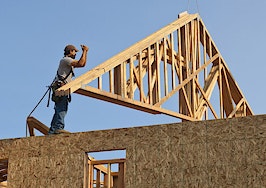Years after the housing crisis, many, but not all, homeowners have emerged from negative equity. At its peak in 2012, negative equity sat at 31.4 percent. As Zillow reported in a recent update, at the end of 2016, just 10.5 percent of homeowners were still underwater, down from 13.1 percent of homeowners at the same time last year.
However, as the rate of home prices slows, the rate at which negative equity declines is also impacted.
The 2.6 percentage-point decline over 2015 is down from the 3.8 point drop between 2014 and 2015, and less extreme still than the 8.1 percentage points decrease in negative equity that Zillow recorded between 2012 and 2013, Zillow’s chief economist Svenja Gudell explained in the report.
The good news is that in 2016, 1.2 million homeowners emerged into the black. The bad news is that 5 million homeowners remain mired in the red.
Now, as home values near or surpass the peaks reached in the last boom, it remains to be seen if some of these owners will ever make it into the promised land of positive equity.
Zillow data
According to the Zillow data, Las Vegas and Chicago face the highest rates of negative equity among the largest U.S. metros, with 16.6 and 16.5 percent of homeowners underwater, respectively.
When Zillow issued the same report a year earlier, the same two cities commanded the top spot with Chicago showing 20.5 percent upside and Las Vegas showing 20.9.
Meanwhile, some of the country’s hottest markets have the lowest rates of negative equity:
- San Francisco
- Portland
- Los Angeles
- Denver
- San Jose, California.
However the gains in these markets are slowing. Last year, San Jose had 2.8 percent of homeowners underwater; this year, it snuck down to 2.7 percent.
CoreLogic data
A report on negative equity released by CoreLogic showed that most U.S. homeowners with mortgages saw their equity increase nearly 12 percent, a total of $783 billion, in 2016. The data revealed that 1 million borrowers moved out of negative equity during 2016 with 93.8 percent of all mortgaged properties on positive ground.
Washington and Oregon saw the largest home appreciation in 2016, each coming in at over 10 percent, according to CoreLogic.
Trends toward recovery and looking forward
While the numbers for the two reports are different, the trends for both show that the market has strongly recovered for most metros.
This is good news for housing overall. Getting out from underwater doesn’t just benefit the homeowners involved; it also helps the market as a whole. Those who have equity in their homes are more likely to sell, potentially easing the ongoing inventory crunch. However, judging from some predictions, it’s possible that we’ve reached the most upward swing of this cycle.
What will the rest of the year hold?
With a slowing in prices, some of the most overheated markets may be taking a pause. Rising interest rates will impact not just homebuyers but those looking to refinance or take out a home equity line of credit for needed repairs.
The strong economy means many millennials are ready to take the next big step, though low inventory is causing homebuyer pain across the country. A recent review of MLS data by Re/Max showed that inventory for February sat at 3.6 months nationwide and as low as 1 month in hot markets like Denver and Seattle.
As homebuying season continues, we will likely see more sellers testing their luck, seeking to cash in while prices are high.
Deidre Woollard is the co-founder of Lion & Orb, a real estate public relations company. Follow her on Twitter @Deidre.










